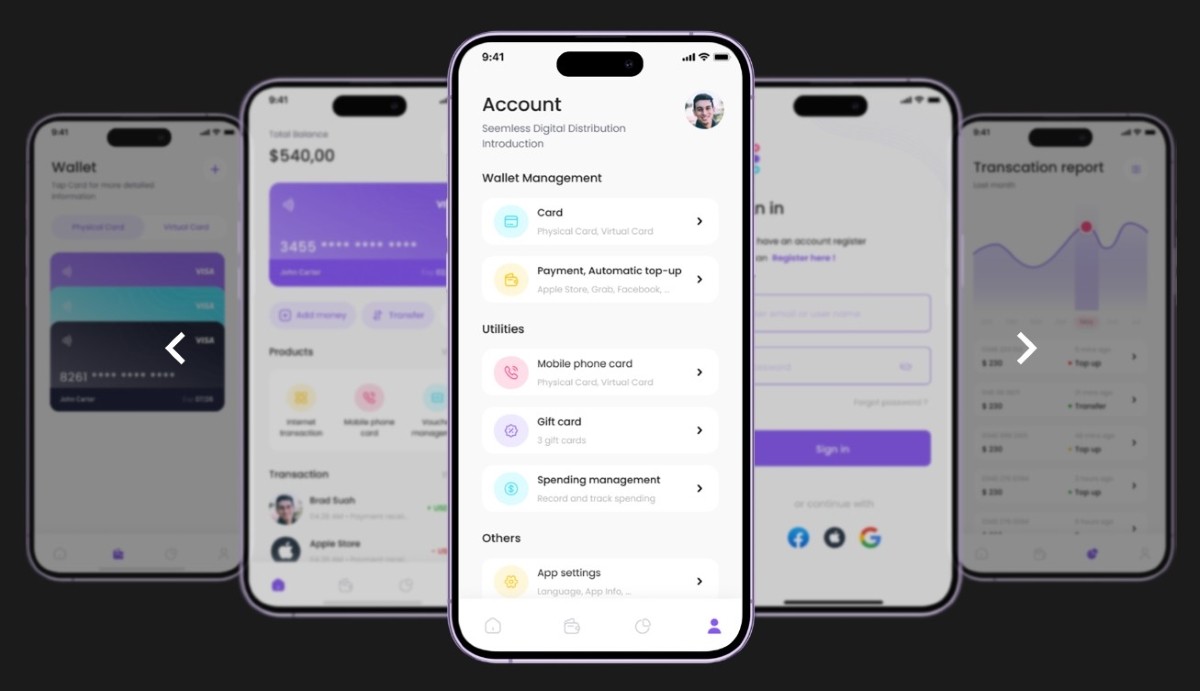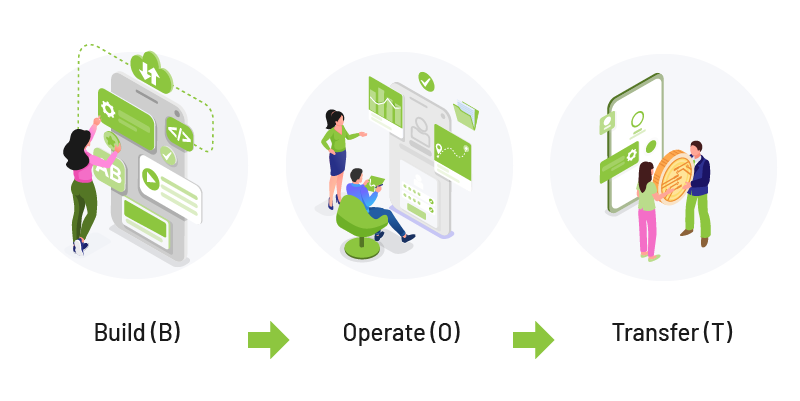Do you want to develop software at faster and cheaper rates while keeping quality high? Nearshore software development could be the answer. This method lets you work well with teams that are nearby.
They understand your culture and work in the same time zone. This makes communication easy. This article explores what nearshore is. It also explains why many businesses choose it.
You will learn about different models. You’ll also see how they stack up against other outsourcing options. We’ll show you how to use them as well.
It doesn’t matter if you’re starting or already running a big company. Knowing the perks of nearshoring is crucial. These perks include cost savings, better conversations, and access to skilled developers.
We’ll help you pick the right outsourcing company. We’ll show you how to build a strong partnership with them. Keep reading to find out how to boost your business with nearshore software outsourcing. We’ve got all the details you need to make the best choice.
What is Nearshore Software Development?
Do you want to expand your company’s software capacity? Nearshore software development could be your perfect solution. Picture this: you need to enhance your development process. But you want to avoid the hurdles of working with a distant team.
Nearshore development services connect you with teams in nearby countries. These teams are not just close in distance but in culture as well. Such proximity ensures smooth discussions and joint effort. This is all thanks to slight time differences and cultural parallels.
Choosing a nearshore development company is like teaming up with a neighbor. Your external team is just a short flight or a quick call from you. This closeness supports a more unified team spirit. It allows for agile development with instant feedback.
The nearshore companies combine convenience, cost efficiency, and harmony. This approach isn’t just cost-effective; it boosts your project’s success. You get a team that acts as an extension of your own.
Factors for Choosing Nearshore Software Outsourcing
Considering nearshore software outsourcing has several advantages. This approach keeps your project agile, high-quality, and well within budget. Explore how nearshore developers can transform your software projects. They help you scale your business and boost innovation.
1. Cost Efficiency
Going for nearshore can save you money. And you won’t sacrifice quality. It helps you cut costs while improving efficiency.
Think about it: you don’t want high travel expenses. Your travel expenses will reduce when you work with nearshore services. No more pricey global flights to manage your team—it’s likely just a quick trip.
Plus, working costs decrease. A web developer shares similar business hours with you. This reduces coordination headaches across time zones. This alignment speeds up discussions and project progress. It makes nearshore outsourcing development a smart financial move for your business.
2. Improved Contact Channels
When you work with nearshore companies, having close locations helps. Picture you and your team working in real time. There are no more lags like in offshore models.
This closeness makes conversations smoother and works well with agile development. Immediate changes and constant feedback are crucial. It can be a quick video call to fix a problem or a planned meeting to discuss progress.
Information exchange is simple with nearshore services. It’s like having your team right next door. They are ready to tackle challenges and keep your project on track.
3. Cultural Affinity and Ease of Integration
Do you want a partnership that fits into your company culture? Then nearshore application development is a big plus. This model is easy to blend in. It’s not only about being close by; it’s about smooth work and a strong team.
Nearshore development outsourcing means you share the same cultural norms and business habits as your partners. This means fewer mistakes and a better, tight-fitting working relationship. Plus, if you speak the same language or something similar, it makes everything even smoother.
This is super important when you need things done fast. It’s crucial when you have to adapt to market changes. Picture working with your nearshore team on a tough project phase. There will be no language issues. That’s like having an extra branch of your office in a nearby country.
Having the same culture and language helps with discussions. It boosts team morale and cooperation as well. This makes projects more successful and efficient. It’s not just helpful; it can change the game for businesses. This is useful if you want to grow without dealing with different cultures.
4. Legal and Government Compliance
When expanding to the global scene, picking the right company helps. It can help with legal and official rules. You don’t want to only follow laws. You want to keep your and your client’s data safe as well.
Let’s say you’re in regions with similar laws, like the EU countries. Most IT development partners likely know laws like GDPR. This makes it easier to follow rules and boosts security for your projects.
Work with a nearshore technology company in places with similar rules. It lowers the risk of legal issues. This helps a lot when dealing with sensitive data. It lets you focus on growing and innovating, knowing they have covered the legal stuff.
5. Access to Skilled Labor
With this approach, you get direct access to top tech talent. Nearshore regions are close and packed with skilled pros.
Picture having a pool of IT solutions on hand. They have skills in the latest tech, like agile development. Being close means better teamwork, unlike distant outsourcing. Software development nearshoring expands your team with pros who bring skill and speed. It’s great for quick access to specialized skills.
Whether launching new products or scaling up, nearshore outsourcing suits most needs. They help you be flexible and save money. Plus, a nearshore development center likely shares your business culture and work hours. This boosts capacity and project management efficiency.
How Nearshore Development Models Work
Knowing the models is vital when stepping into software development. Each fits specific needs and sizes, helping you find the right one. Each nearshore software development model can fit your company’s needs. It ensures you can find the perfect match for your project.
1. Dedicated Development Teams
Choosing a dedicated team means more than extra hands. You get an engaged unit that works as an extension of your team. This model is perfect if you require high involvement and expertise for long-term projects.
With dedicated software solutions. You enjoy consistent discussions and a deep understanding of your business goals. You get a team that commits to your project’s success. It’s great for businesses aiming to scale without hiring full-time employees.
2. Project-Based Outsourcing
Project-based outsourcing is perfect for specific projects with clear goals and deadlines. It’s ideal for new web development or one-time software projects. This approach lets you access software developer’s expertise without a long commitment. It’s cost-effective and flexible.
It lets you focus on your core business as well. Nearshore product development services handle the project’s heavy lifting. This model works well for companies needing short-term specialized skills. It works with those managing budget constraints as well.
3. Staff Augmentation
Staff augmentation is key when you need to boost your team fast or fill skill gaps. This model lets you hire nearshore developers when you need them. It’s like having extra help without full outsourcing.
Technology solutions blend seamlessly with your team, offering fresh skills and perspectives. Great for fluctuating workloads or short-term needs.
Nearshore vs. Offshore: The Differences
Are you curious about nearshore vs. offshore software development? Nearshore aligns with your time zone, easing information exchange. Offshore development saves you money, but needs complex logistics management. Let’s delve into these differences.
Time Zone Differences
Time zones are essential when deciding between nearshore and offshore software development. With a nearshore service, there’s only a slight time difference. This lets you work well in real time.
But, with offshore teams, dealing with big time gaps can cause conversation delays and slow down projects. With a nearshore outsourcing company, handling urgent issues during regular hours is easy.
Offshore teams might end their day as yours starts, causing delays in addressing problems. Choose nearshore for smoother work and faster problem-solving.
Cost Comparison
Nearshore SaaS development may cost more. Picture managing an extensive project where quick decisions matter. You’re in the same time zone as nearshore, so discussions are fast. No waiting around like with offshore teams.
Plus, cultural alignment means less confusion. Investing more gives you better project control and quality interactions. It’s smart for agile development and builds strong partnerships.
Talent Quality and Convenience
You boost your team’s skills when you team up with a nearshore software development company. Consulting regions offer top-notch talent that matches your needs. They share similar education, training, and work ethics, making joint efforts seamless.
Plus, working with nearshore services is easier with logistics. Fewer time zone differences and shorter travel times mean smoother coordination. You can even visit development centers faster if necessary.
This effortless interaction fosters better app development. This ensures smooth discussions and quick adaptation to changes. It keeps your project on course.
How to Choose the Right Outsourcing Model: Comparison
Choosing the right outsourcing model is vital. It’s about matching your needs with the right fit. It doesn’t matter if you pick nearshore software testing or software engineering. You must find a partner who boosts innovation and speed.
Are you ready to revamp your approach to outsourcing projects? Let’s guide you to the ideal choice.
Nearshore vs. Offshore
When expanding your team, understanding software nearshore development versus offshore is vital. Your choice affects service control, project management, cultural fit, and risk.
| Factors | Nearshore | Offshore |
| Costs | Higher labor costs | Lower labor costs |
| Access to talent | Access to talent with similar skill sets | Large pool of skilled professionals |
| Control of Operations | Offer better control because of proximity. Similar time zones allow real-time decisions and quicker adjustments. | With time differences and delay updates, offshore models impact agile development. |
| Project Management Ease | Simplify project management. Coordinating with nearby teams is easier than with distant ones. | Spontaneous meetings and discussions are more challenging with late-night or early-morning calls. |
| Cultural Harmony | Sharing cultural resemblances. This aids conversations and understanding. | Offshore teams need more time to bridge cultural gaps, slowing projects and influencing team dynamics. |
| Risk Management | Close geographic and cultural alignment means more stability and fewer legal issues. This alignment safeguards against data security risks. It ensures compliance with standards like GDPR. | It is crucial to thoroughly research and fully understand the laws of the offshore country. |
Choosing between nearshore and offshore isn’t just about cost. It’s about balancing efficiency, control, risk, and group effort. Understanding these differences helps leverage global talent. It maintains development integrity as well.
Nearshore Vs. Onshore
You know that picking a proper outsourcing model for your needs is essential. It’s more than a financial decision. It’s about aligning with a strategy that fits your business like a glove.
When weighing options between nearshore vs. onshore, each model offers unique advantages. These can impact your project’s success a lot. Let’s break down the key differences.
| Factors | Nearshore | Onshore |
| Cost | Often hits a sweet spot in cost. This is true for U.S. businesses outsourcing to Latin America. Living costs and salaries are lower here, but work quality is high. | While close and aligned with local standards, can be pricey. This is due to higher labor and operational costs at home. |
| Access to talent | Taps into a wide talent pool across borders yet keeps cultural and operational alignment. Places like Mexico and Costa Rica have growing tech scenes with the best nearshore software development companies. They are a short flight from US cities as well. This proximity makes collaboration easier and lets U.S. companies access diverse skills that are rare or costly at home. | Restricts you to local talent, which can be limited and expensive, especially in specialized tech areas. |
| Regulatory Compliance | A nearshore developer often follows similar legal frameworks as US businesses, especially those in economically connected countries. This similarity helps when you want to comply with international data security standards, like GDPR in Europe or HIPAA in the US. | Onshore companies, by default, comply with local laws. This is a big plus for projects needing tight data protection and security, making onshore the choice for sectors like healthcare and finance, where compliance is critical. |
Choosing between nearshore and onshore is more than just weighing costs and benefits—it’s about finding synergy that boosts your company’s efficiency and meets your strategic goals.
Whether you value budget flexibility, access to diverse talent, or strict compliance with regulations, understanding these key points will help you make the best decision for your software development needs.
Steps to Outsource to a Nearshore Software Team
By now, you may want to start outsourcing to a nearshore SaaS developer. Yes, it’s a strategic move to boost your company’s abilities, cut costs, and improve efficiency. So, this is how to do it:
1. Choosing an Outsourcing Model
The first step is key: pick the right model for your strategy. This choice shapes how you work together and how well your nearshore team fits with your team.
You may choose a project-based model for short-term needs or a dedicated team model for ongoing partnerships. Each option offers benefits like flexibility or deep integration. Matching this with your goals is crucial.
2. Finding a Destination
Now, find the best place for your software development efforts. It’s not just about time zones. You must understand cultural fit, tech skills, and business habits. Countries like Mexico and Colombia are favorites for US companies.
They offer cultural compatibility and strong tech talent. This makes overcoming common outsourcing hurdles, like language issues and different work ethics, easier.
3. Selecting a Partner
Picking a partner is vital. Your partner must have the tech skills and communication clarity required. Look at their past projects and client feedback. Discuss deeply to check their grasp of your needs and their delivery capability.
4. Defining Your Requirements
Start with clear communication by laying out your project needs well. List the scope, key tasks, goals, and timelines.
The clearer your brief, the less confusion there will be. This lets your IT team focus sharply on your objectives, ensuring they deliver what you want.
5. Research and Evaluate
With a firm idea of what you need, start researching potential technology outsourcing companies. Check their tech skills, customer service, and adaptability.
Review how they solved past issues as well. These insights help you understand how they might handle your project’s challenges.
6. Requesting Proposals
Narrow your choices and ask for detailed proposals from each programming company. These should outline their project approach, methods, timelines, and a complete cost breakdown. Carefully review these to find the best match for your vision and budget.
7. Verifying Expertise
Always check the expertise of your programmer. Review their case studies, request client references, and consider technical interviews. This confirms that they can deliver the quality and innovation you need.
8. Explaining Your Vision
Once you pick your outsourcing partner, share your full project vision with them. Include technical details, the project’s purpose, and goals. A shared vision creates a strong team bond and helps the nearshore project team understand their targets.
9. Signing a Contract
The last step is making your partnership official with a contract. This should detail the project scope, expected results, timelines, payment terms, and privacy rules. It should handle ways to solve any issues as well. A solid contract protects your interests and sets clear expectations, leading to successful programming outsourcing.
Following these steps carefully and communicating clearly can maximize the benefits of nearshore outsourcing. This saves costs and brings specialized skills and new technologies, boosting your company’s position in the global market.
Which Locations Are Best for Nearshore Development?
When choosing nearshore software development spots for U.S. companies, many factors matter. We must consider cultural fit, technical skills, and language ability. Latin America shines in these areas, especially Mexico, Argentina, and Brazil.
These countries offer significant advantages because they are close and work during U.S. hours. This makes teamwork and talking easier.
1. Mexico: A Prime Choice
Mexico stands out for nearshore development. It matches U.S. time zones closely, which means fewer disruptions. Most people here speak English well, which ensures smooth conversations. Mexico has a strong tech talent pool.
This is because of government efforts to boost the IT sector. Also, outsourcing to Mexico is cost-effective. This means U.S. companies can save money while still getting quality work.
2. Argentina: Skilled and Vibrant
Argentina is popular for its dynamic software development scene. It has many skilled developers. The country’s software industry is growing fast. Excellent education and tech skills support this growth.
For US companies, Argentina offers a chance to get high-quality work without spending too much. It’s a good place for those looking to make their dollars go further.
3. Brazil: Large and Reliable
Brazil has a huge pool of tech talent. Many top graduates come from its renowned universities every year. The tech sector here is mature, making it a dependable source for skilled developers.
Like Argentina, Brazil’s labor costs are lower than in the US. This lets businesses manage their budgets better while still accessing first-rate talent.
Choosing the Right Location
Picking the right nearshore location depends on your company’s needs. This includes your budget, project specifics, and how much you want to interact with the developers. Mexico, Argentina, and Brazil each offer unique benefits. These can match different business goals and strategies.
Final Thoughts
You’ve likely realized by now that nearshore software development can really streamline your operations. By choosing nearshore development, you help your business respond quickly and skillfully to market shifts. You also keep a tight hold on quality and innovation. This choice isn’t just about saving money. It’s about investing your resources wisely.
FAQs
What is an example of nearshore software outsourcing?
Think about running a tech company in California. Imagine you teaming up with a software firm in Mexico to create a new app. This is nearshore software outsourcing.
You pick Mexico because it’s close, making talks and trips easy. It also costs less than hiring in your area. This way, you use Mexico’s great tech skills and monitor your project’s money and progress.
What does ‘nearshore’ refer to in technology?
In tech, ‘nearshore’ means sending work to nearby countries. Being close cuts down on cultural and language issues. It also keeps time zones alike and simplifies managing the work. The goal is to balance cost, ease, and quality in your outsourcing plan.
How does nearshore compare to in-house?
Choosing nearshore outsourcing over growing your own team can be a smart choice. It’s useful if your team is already too busy or missing some key skills. Nearshoring lets you tap into a wider talent pool and might cost less.
You won’t need to pay for more full-time staff. However, having your team on site might give you more control and faster results. But, this can lead to higher costs and limits on resources.










